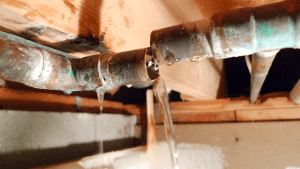6 Ways to Locate Concealed Water Leakages in Your Home
6 Ways to Locate Concealed Water Leakages in Your Home
Blog Article
Have you been trying to locate advise on Finding hidden leaks?

Early discovery of dripping water lines can mitigate a prospective catastrophe. Some small water leakages may not be noticeable.
1. Check Out the Water Meter
Every residence has a water meter. Checking it is a proven way that helps you discover leakages. For beginners, turn off all the water sources. Ensure nobody will flush, use the tap, shower, run the cleaning machine or dish washer. From there, go to the meter and also watch if it will certainly change. Given that no one is using it, there ought to be no motions. That indicates a fast-moving leak if it relocates. If you spot no changes, wait an hour or 2 and examine back again. This indicates you may have a slow leak that can also be below ground.
2. Check Water Consumption
Analyze your water bills and also track your water intake. As the one paying it, you should notice if there are any disparities. If you identify sudden changes, despite your consumption being the same, it means that you have leaks in your plumbing system. Keep in mind, your water expense should fall under the same variety each month. An unexpected spike in your expense suggests a fast-moving leak.
A stable increase every month, also with the exact same behaviors, reveals you have a sluggish leakage that's likewise gradually rising. Call a plumber to completely examine your property, especially if you feel a warm area on your floor with piping underneath.
3. Do a Food Coloring Test
30% comes from bathrooms when it comes to water usage. Examination to see if they are running effectively. Decline specks of food shade in the storage tank and also wait 10 minutes. If the color somehow infiltrates your dish throughout that time without flushing, there's a leakage in between the container and also dish.
4. Asses Exterior Lines
Do not neglect to examine your outdoor water lines as well. Examination spigots by connecting a yard hose. Should water permeate out of the connection, you have a loosened rubber gasket. Replace this and make certain all links are limited. If you've got a sprinkler system, it will assist get it skillfully took a look at and also maintained annually. One small leak can waste tons of water as well as surge your water bill.
5. Examine and also Evaluate the Situation
Property owners should make it a behavior to check under the sink counters as well as even inside cabinets for any bad odor or mold and mildew growth. These two red flags show a leak so timely attention is called for. Doing routine inspections, also bi-annually, can conserve you from a major problem.
Check for stainings and also weakening as many home appliances and pipelines have a life expectations. If you presume leaking water lines in your plumbing system, do not wait for it to escalate.
Early discovery of dripping water lines can mitigate a potential calamity. Some tiny water leaks may not be noticeable. Checking it is a surefire way that aids you uncover leakages. One tiny leakage can throw away tons of water and increase your water expense.
If you presume leaking water lines in your plumbing system, do not wait for it to rise.
How to Know If Your Home Has a Hidden Leak
Water Meter Reveals Inexplicable Water Usage
If you’d like to test whether or not there’s a leak somewhere in your home, you can do this using your water meter. Here is how to conduct the test:
Don’t use any water in your home for at least 30 minutes; this also means not turning on faucets or water-using appliances.
Go outside, and check your water meter for activity.
If your water meter shows that there was activity, even though no one was using any water, this proves that there is a leak in your home.Visible Mold or Mildew Growth
Leaks behind walls create moist, dark environments that allow mold and mildew to grow and thrive. Eventually, you might see mold growth forming on the wall closest to a hidden leak.
If mold is growing in an area that receives a high amount of moisture, such as a bathroom, it may simply be an indication that better ventilation is needed. However, if you see mold growth on a wall or the ceiling in an area where you would not expect, you probably have a hidden leak.
Musty, Mildew Odor
Sometimes you might not be able to see the mold or mildew that is growing as a result of a leak. However, the smell can give the problem away just as easily. If you catch a whiff of something musty, there’s a good chance that old water is collecting somewhere in your home that you can’t see.
Stained/Warped Walls, Ceilings, or Floors
When your home soaks up water, a variety of red flags can become visible, including ceiling stains, bubbling drywall, warped walls, and sagging floors. While these issues can be caused by excess humidity, they can also be signs that a pipe or plumbing connection has started leaking behind your walls.
Inexplicably High Water Bill
After a while, you get a general sense for what your water bill should be. If you own a pool or sprinkler system, your bill will tend to be higher during summer. However, if you receive a water bill that seems especially high, and you can’t figure out what caused it, then you may have a hidden leak somewhere that’s increasing your bill.
https://www.plumbingjoint.com/blog/2019/july/how-to-know-if-your-home-has-a-hidden-leak/
.jpg)
As a reader on Finding hidden leaks, I figured sharing that excerpt was a good idea. Enjoyed our post? Please share it. Let other people check it out. Thanks a lot for your time invested reading it.
Report this page